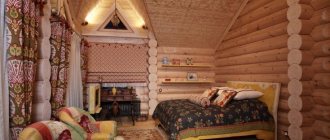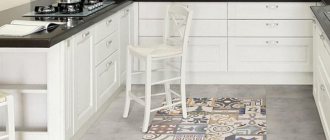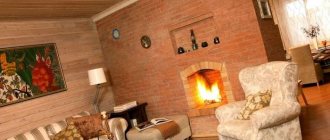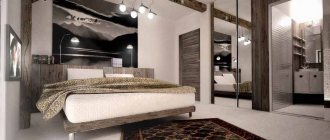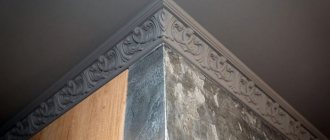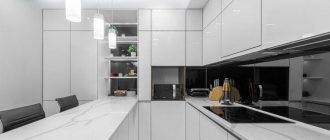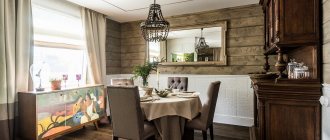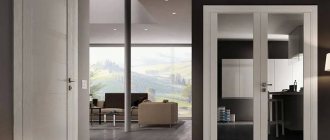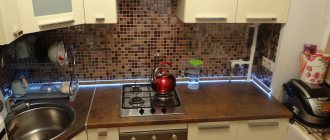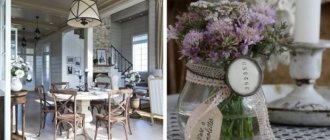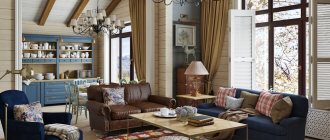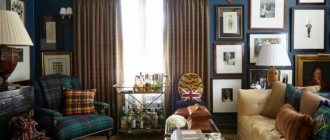Russian style is a trend in interior design where environmental friendliness and naturalness prevail. Russian style, thanks to the combination of folk traditions in the decoration of furniture, walls and decor, has gained popularity among designers outside of Russia and has become a favorite motif in the design of many houses and apartments in the world.
Features and Distinctive Features
Russian style in the interior is easy to recognize by its deliberate emphasis on the natural origin of finishing materials and the environment. Stone and wood only in their natural form give the atmosphere the desired character. The lack of refinement and rough lines enhance and emphasize a genuine and inextricable connection with nature. Main characteristics and features of the interior in the Russian style.
Where is it appropriate?
It is unrealistic to make a completely Russian hut in an apartment. Externally there can be no talk of this; inside there will only be some kind of stylization. Apartment owners will be able to add some directional features; many stop there. They decide to waste time on completely stylizing their home.
This is suitable for a log house in the interior. In this type of housing it is appropriate to place familiar elements. No one forbids using it in the interior of a wooden house; the inside will look quite harmonious.
Russian style is more suitable for wooden houses
Russian style in the bedroom interior will look very harmonious
Varieties of style
Designers distinguish several varieties of Russian style, each of which has its own distinctive features. Options to consider include:
- Russian hut.
- People's tower.
- A la russe.
A la russe Russian hut
People's Tower
Origin story
Despite numerous disasters, the Russian people managed to preserve their rich cultural code and pass it on to their descendants. The heritage of the Slavs also includes decoration traditions, which were appreciated by representatives of different countries.
Russian style has its roots in ancient Slavic culture, the main feature of which was modesty. There was nothing superfluous in the houses, but only what was necessary for a comfortable life: a stove, a table, benches, sleeping places. Later, images and ornaments began to appear on the walls, and dolls and crafts began to appear in the home itself.
Paganism greatly influenced the interior of the premises. The ancient Slavs believed that objects and nature were of divine origin. This was expressed in the creation of thematic carvings and decor in the form of figurines of idols. The central element of the home of the Russian stove was always kept clean and richly decorated with drawings and paintings: this is how the ancestors pacified the mythical brownie who “lived behind the stove.” Until the mid-15th century, houses were built mainly from logs from the nearby forest.
After Sophia Paleolog, the wife of Tsar Ivan III Vasilyevich, invited an architect from Italy, local craftsmen learned to build houses from stone and brick.
Facade
The tower house is a spacious wooden building, a log structure. It may be surrounded by a covered gallery with a high porch covered by a canopy. The facade is decorated with a number of windows, always with figured platbands. The roof ridge is also richly decorated.
Source: russiatrek.org
Source: krabov.net
Source: lh3.googleusercontent.com
Source: mtdata.ru
Sometimes you can’t distinguish carving patterns from lace, the work is so delicate! The gallery is usually supported by squat, pot-bellied columns, and they are also often decorated with balusters. In addition to carvings, the facade can be decorated with tiles - the most popular decorative element in the 17th century.
Source: wood.totalarch.com, i.pinimg.com
Source: vip-arhitektor.livejournal.com
Source: i.pinimg.com
There are especially many similar buildings in the Russian North, where the tradition of wooden architecture has been strong from time immemorial. The carved heritage of Totma and Vologda is rightfully considered one of the wonders of the world!
Source: blogspot.ru
Source: i.pinimg.com
Choice of colors
The color scheme of the interior in the Russian style dictates all shades of brown, white and beige. Brown is the main color in the palette, which allows you to maximize the color of a wooden house. Wooden panels, parquet flooring and suspended beams combine to create the same effect of coziness, originality and unity with nature.
You don't have to limit yourself to a color palette that imitates wood. It is better to dilute this ensemble with curtains and tablecloths in pastel colors, and use napkins and blankets with delicate floral patterns. More and more fashion experts compare Russian style with eco-design, which is now widespread in the West. Read
